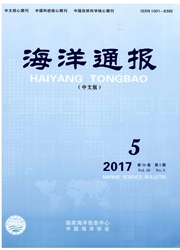

 中文摘要:
中文摘要:
河口建闸使河口区沉积动力条件发生剧烈改变,常产生航道淤浅、泄洪不畅的危害。以新洋港河口为例,于2012年8月18-24日在对新洋港闸下河口进行全潮锚系观测,分析水位、流速及悬沙浓度时空变化和悬沙输运特征。结果表明,建闸河口区为不规则半日潮,大潮期间涨潮历时短、潮流强,落潮历时长、流速相对较小;潮周期内沉积物发生强烈的再悬浮和沉降作用,再悬浮通量数量级可达到10-3kgm-2s-1;小潮期间流速、悬沙浓度和再悬浮通量均小于大潮期间的数值。大潮期间的强涨潮流导致水体不但能够产生强烈再悬浮,同时还将高浓度悬沙水体向上游输送、抵达闸下区域,这是造成建闸河口水道淤积的主要原因。在上游开闸初期和后期,存在较强的盐度垂向梯度,水体层化特征显著;但当上游淡水量较大时,流速迅速增强、再悬浮较为显著,水流可将高悬沙水体向外海输送,对河口水深的维持有利。
 英文摘要:
英文摘要:
Construction of sluice gate in tidal estuaries could severely change local sediment dynamic conditions, as well as the topography, which often leads to the high deposition of fine sediments in channels. Based on the survey at 3 anchor stations located at sluice gate downstream in both spring and neap tidal cycles during 18-24 August 2012, we studied the characteristics of suspended sediment concentration change in Xinyanggang estuary. The results showed that this estuary belonged to the semi-diurnal tide. The flood duration was shorter with stronger current velocity than the ebb duration during the spring tide. There are strong sediment resuspension and siltation during a tidal cycle. The magnitude of the resuspension flux could be as large as 10-3 kg m-2 s-1. This could not only lead to strong resuspension, but also transport water with highsediment concentration upstream at sluice gate, which might be the main reason for the channel siltation. When the sluice gate was open, the fresh water resulted in a relatively strong vertical salinity gradient in the early and later stage, which leaded to the damping of sediment resuspension. However, when the amount of fresh water increased enough, the water velocity increased rapidly and resulted in a strong resuspension and sediment transport towards the river mouth. It had the advantage of keeping the channel depth.
 同期刊论文项目
同期刊论文项目
 同项目期刊论文
同项目期刊论文
 期刊信息
期刊信息
